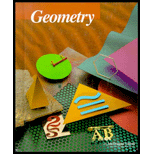
a.
To explain: How to pass a plane through a cube so that the intersection is an equilateral
a.
Explanation of Solution
Given:
A cube and a plane.
An equilateral triangle cross-section can be obtained by cutting the cube by a plane defined by the midpoints of three edges emanating from any one vertex.
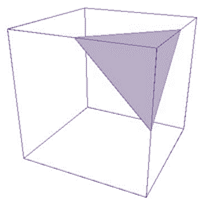
Conclusion:
Hence, an equilateral triangle cross-section can be obtained by slicing a cube.
b.
To explain: How to pass a plane through a cube so that the intersection is a trapezoid.
b.
Explanation of Solution
Given:
A cube and a plane.
A trapezoidal cross-section can be obtained by cutting the cube by a plane defined by the midpoints of two consecutive edges and the vertices just below the above edges.
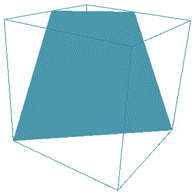
Conclusion:
Hence, a trapezoidal cross-section can be obtained by slicing a cube.
c.
To explain: How to pass a plane through a cube so that the intersection is a pentagon.
c.
Explanation of Solution
Given:
A cube and a plane.
To get a pentagon, slice the cube with a plane going through five of the six faces of the cube.
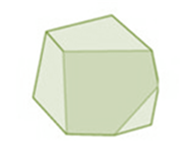
Conclusion:
Hence, a pentagonalcross-section can be obtained by slicing a cube.
d.
To explain: How to pass a plane through a cube so that the intersection is an equilateral triangle.
d.
Explanation of Solution
Given:
A cube and a plane.
To get a hexagon slice with a plane going through all six faces of the cube.
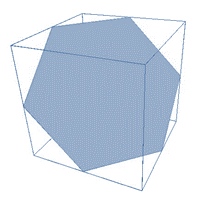
Conclusion:
Hence, a hexagonal cross-section can be obtained by slicing a cube.
Chapter 7 Solutions
McDougal Littell Jurgensen Geometry: Student Edition Geometry
Additional Math Textbook Solutions
Algebra and Trigonometry (6th Edition)
Introductory Statistics
A First Course in Probability (10th Edition)
Intro Stats, Books a la Carte Edition (5th Edition)
Calculus: Early Transcendentals (2nd Edition)
Calculus: Early Transcendentals (2nd Edition)
 Elementary Geometry For College Students, 7eGeometryISBN:9781337614085Author:Alexander, Daniel C.; Koeberlein, Geralyn M.Publisher:Cengage,
Elementary Geometry For College Students, 7eGeometryISBN:9781337614085Author:Alexander, Daniel C.; Koeberlein, Geralyn M.Publisher:Cengage, Elementary Geometry for College StudentsGeometryISBN:9781285195698Author:Daniel C. Alexander, Geralyn M. KoeberleinPublisher:Cengage Learning
Elementary Geometry for College StudentsGeometryISBN:9781285195698Author:Daniel C. Alexander, Geralyn M. KoeberleinPublisher:Cengage Learning

